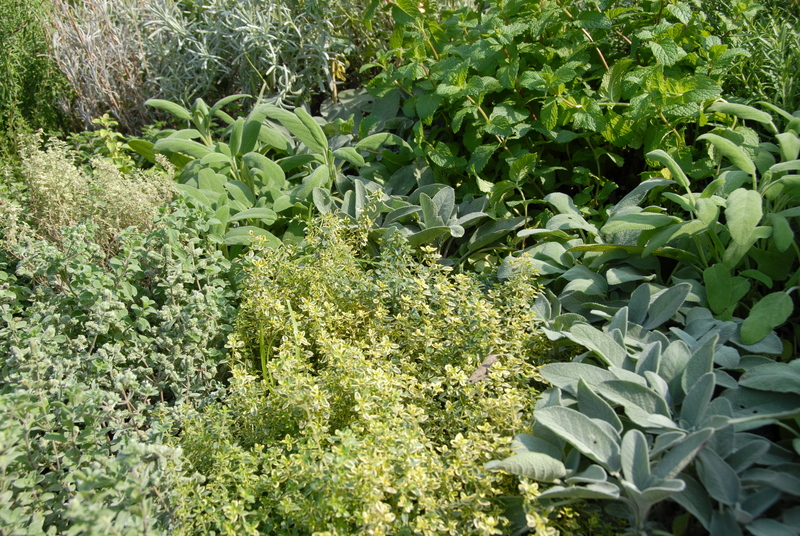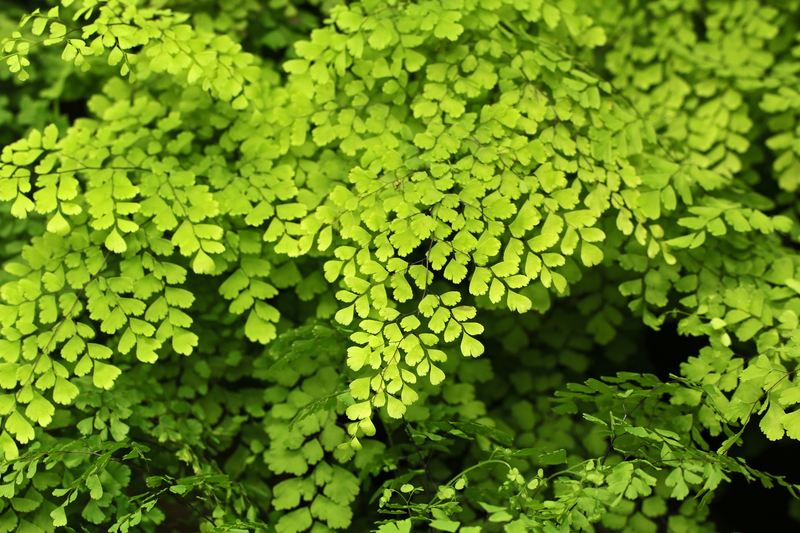Starting Fresh: Beginner Tips for Creating a Lawn You'll Love
If you dream of a lush, green lawn that becomes the envy of your neighborhood, you're not alone. Creating a beautiful lawn from scratch can feel daunting, especially for beginners. Whether you're establishing a new yard or rejuvenating a neglected one, the right start can make all the difference. In this comprehensive guide, we break down the essential steps and offer practical, beginner-friendly tips for creating a lawn you'll love--right from the ground up!
Why Creating a Lawn You Love Starts with a Plan
Before you even pick up a shovel, it's crucial to do some planning. A well-considered plan will save you time, money, and frustration down the road. Think about the kind of look you want to achieve, your lifestyle needs, and how much maintenance you're willing to tackle.
- Visualize your goals: Do you want a play area for kids and pets, a showpiece lawn, or a low-maintenance grassy patch?
- Assess sunlight and shade: Take note of where the sun and shade fall. This affects your choice of grass seed and layout.
- Consider water access: Make sure you have a convenient way to water your lawn, especially in the early stages.
- Plan for landscaping features: Paths, garden beds, and trees should all be factored in.

Understanding Your Soil: The Foundation of a Healthy Lawn
A thriving new lawn starts with healthy soil. Take the time to examine the condition of your soil and make improvements where necessary.
Soil Testing
A simple soil test kit from your local garden center can tell you your soil's pH level and nutrient content. Most grasses prefer a pH between 6 and 7. By knowing your soil type (sand, clay, loam), you can choose the right grass seed and amendments.
The Importance of Proper Drainage
Standing water is the enemy of any lawn. If you notice puddles after rain, you may need to install drains or amend the soil to improve drainage. Mix in organic matter like compost to help heavy clay soils, or add topsoil to low spots.
Choosing the Best Grass for Your Dream Lawn
Not all grass types are created equal, and choosing the right variety is key to long-term success. Factors to consider include your climate, sunlight levels, and how you plan to use your lawn.
- Cool-season grasses (like Kentucky bluegrass, fescue, and ryegrass) thrive in cooler regions with cold winters and mild summers.
- Warm-season grasses (such as Bermuda, zoysia, St. Augustine) excel in hot, sunny climates.
- Shade-tolerant grasses work best under trees or in partial shade.
Match the grass variety to your location and lifestyle. Ask your local nursery or cooperative extension for specific recommendations.
Preparing the Ground: Essential Steps for Laying the Best Lawn
Clearing Old Vegetation
Remove all old sod and weeds by digging or using a sod cutter. For stubborn weeds, a non-selective herbicide may be necessary, but always follow label instructions and allow time for chemicals to dissipate before planting.
Rake, Level, and Improve the Soil
Use a garden rake to break up large soil clumps and remove rocks or debris. Now is also the time to add compost or soil amendments suggested by your soil test. Aim for a smooth, even surface, gently sloping away from buildings for drainage.
Water and Let Settle
Lightly water the area and allow the soil to settle for a few days. This helps reveal low spots that you can fill in for a perfectly level surface.
Seeding, Sodding, or Sprigging: Selecting the Right Planting Method
You have several options for starting your new lawn--each with pros and cons for beginners:
- Seeding: Least expensive, greatest variety of grasses, but requires patience and careful watering.
- Sodding: Instant green, fast results, but more expensive.
- Sprigging/Plugging: Best for certain warm-season grasses, moderate establishment time.
How to Seed a Lawn Like a Pro
- Spread seed evenly using a broadcast spreader. Follow recommended seed rates for your grass type.
- Lightly rake to cover seeds with 1/4 inch soil.
- Mulch with straw or a biodegradable seed blanket to retain moisture and prevent erosion.
Laying Sod for Immediate Impact
- Lay sod strips in a staggered, brick-like pattern.
- Press seams tightly together; avoid overlaps or gaps.
- Roll sod with a lawn roller to ensure good root contact with soil.
Water immediately and thoroughly after installation, regardless of the method.
Watering Your Newly-Planted Lawn
The Key to a Healthy Start
Watering is critical to establishing a lush, resilient lawn. During the first few weeks, seeds or sod must remain continually moist (but not soggy) for roots to develop.
- For seeds: Lightly water 2-3 times daily until seeds germinate and sprouts are established.
- For sod: Soak deeply once per day for the first week, then reduce frequency as roots take hold.
- Avoid watering in the evening, as prolonged leaf wetness encourages disease.
As your lawn matures, gradually ease into deeper, less frequent waterings to encourage roots to grow deeper into the soil.
The First Mow: When and How to Mow Your Young Lawn
Mowing too soon can damage delicate shoots, but waiting too long can weaken them as well. For most grass types, wait until the blades reach 3-4 inches in height before the first mowing. Ensure your mower blades are sharp, and never remove more than 1/3 of the grass height in a single mowing.
Pro Tip:
Leave the clippings on the lawn if you're mowing regularly--they return nutrients to the soil and act as a natural mulch.
Feeding and Caring for Your New Lawn
When to Fertilize
After your lawn is established (roughly 4-6 weeks after germination or sod rooting), apply a starter fertilizer high in phosphorus to support root growth. Avoid over-fertilizing, which can burn young plants and encourage weeds.
Managing Weeds
A thick, healthy lawn is the best defense against weeds. Avoid using weed killers until your lawn has been mowed at least 3-4 times, and only treat existing weeds with spot applications if necessary.
Ongoing Care: Aeration and Overseeding
- Aeration: Once a year, use a lawn aerator to reduce soil compaction and improve water and nutrient absorption. This is especially important for high-traffic areas.
- Overseeding: If your lawn is thin or has bare spots, overseed in early fall (for cool-season grasses) or early spring (for warm-season grasses) for improved density and resilience.
Essential Tools for Lawn Beginners
You don't need a garage full of gadgets. To create and maintain a gorgeous lawn you'll love as a beginner, make sure you have:
- Lawn mower (push or powered)
- Rake
- Seed/fertilizer spreader
- Hose and sprinkler or watering can
- Hand trowel and basic gardening gloves
These essentials will carry you through your first season and beyond. Add specialty items like lawn rollers or aerators as needed.
Lawn Troubleshooting: Common Problems and Easy Solutions
- Patchy growth: Usually due to uneven seed spreading, poor watering, or soil issues. Reseed and improve soil as needed.
- Yellowing grass: Can indicate over-watering, poor drainage, or nutrient deficiency. Adjust care or test soil.
- Weeds or pests: Hand-pull small invasions, encourage thick grass, and use targeted organic controls if possible.
If you spot a problem, act early!
Prompt action can prevent minor issues from developing into serious setbacks for your new green space.
Going Green: Eco-Friendly Tips for a Sustainable Lawn
A beautiful lawn you love can also be an eco-friendly one! Here's how:
- Choose drought-tolerant grass varieties to conserve water.
- Collect rainwater for irrigation--your lawn will thrive on natural rainfall and stored reserves.
- Limit fertilizer and pesticide use by fostering healthy soil and using organic amendments.
- Go electric with mowers and trimmers to reduce air pollution and noise.
- Leave clippings or compost them instead of sending them to landfills.

Frequently Asked Questions About Starting a Lawn
1. When is the best time of year to start a new lawn?
Fall and early spring are best for seeding cool-season grasses because of mild temperatures and abundant rainfall. For warm-season grasses, late spring to early summer works best.
2. Should I use seed or sod for my first lawn?
If you want fast results and are ready to invest more, sod gives you instant green. If you're patient and on a tighter budget, seeding a new lawn is affordable and rewarding.
3. How long does it take for a new lawn to become established?
With proper care, seeded lawns take 2-3 months to fill in; sod lawns establish in 2-3 weeks. Full maturity and resilience develop after one full growing season.
Conclusion: Grow the Lawn You've Always Wanted
Starting fresh with your first lawn can be an exciting, rewarding adventure! By understanding your soil, choosing the right grass, and following essential lawn care tips for beginners, you'll pave the way for a yard that is vibrant, healthy, and perfectly suited to your needs.
Remember: patience is key. The lush, green carpet of your dreams is well within reach with steady care and smart practices. Share your progress, learn from each season, and before you know it, you'll have created a lawn you'll love--and so will your family, friends, and neighbors.
Ready to roll up your sleeves? Your best lawn starts today.
Tags: Lawn care for beginners, How to start a lawn, Creating a beautiful lawn, Grass seed selection, Lawn maintenance tips